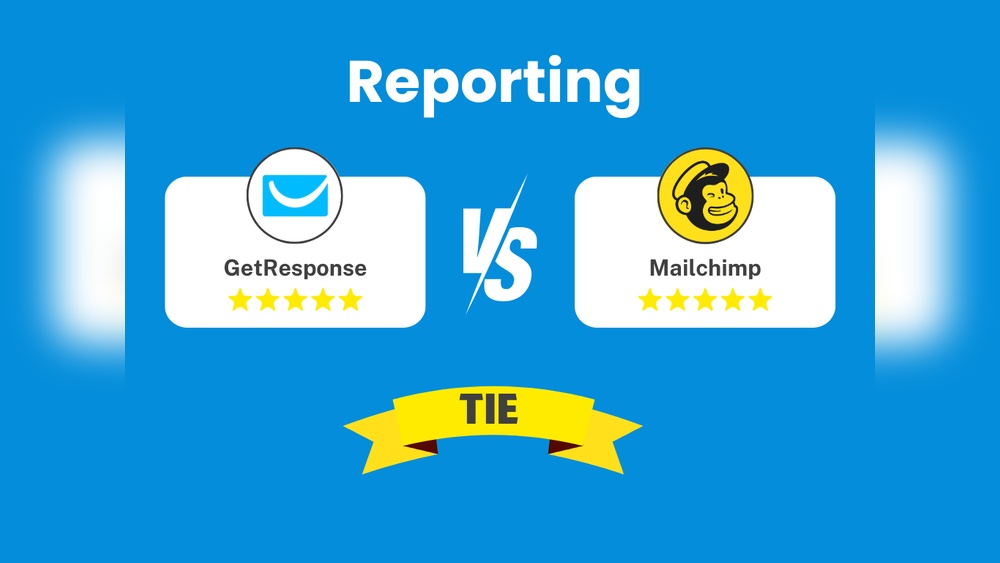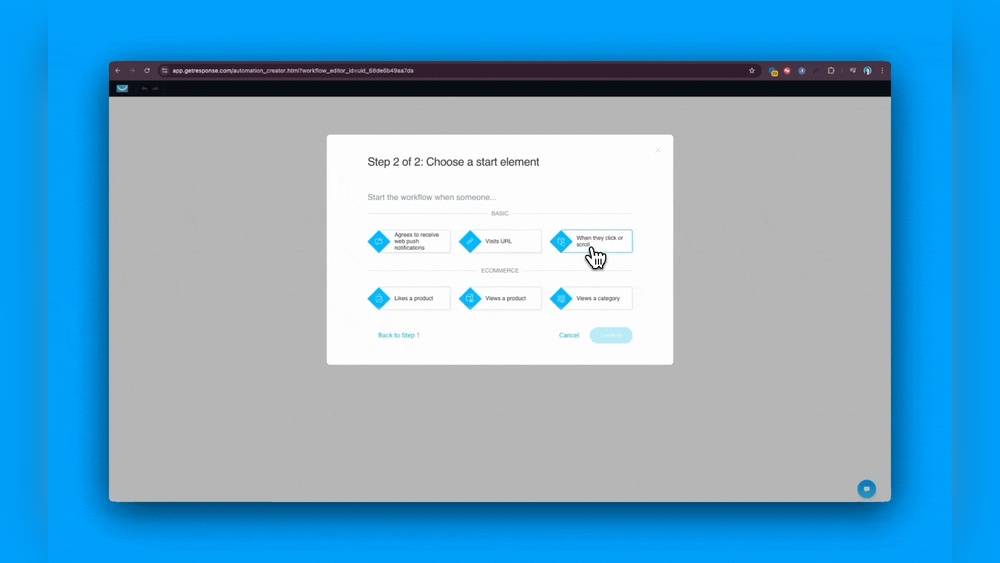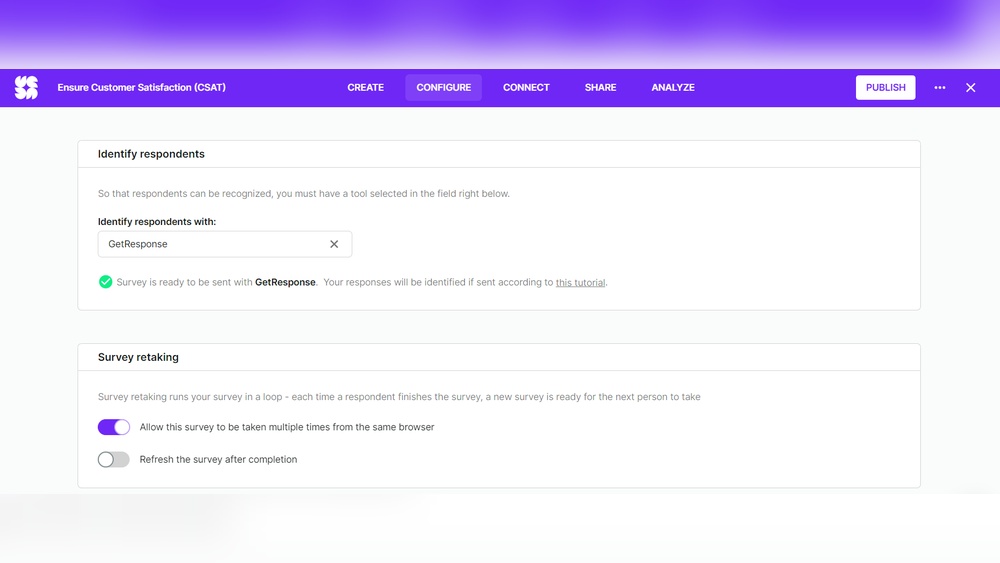Picture this: you’re at a job interview for your dream role in email marketing. The interviewer leans forward and asks, “Can I see your portfolio?”
Your mind races. Do you have one that’s impressive and comprehensive enough to land you the job? If not, you’re not alone, and we’re here to guide you through creating a standout email marketing portfolio that will captivate potential employers or clients.
In this guide, you’ll discover how to showcase your skills and experience in a way that sets you apart from the competition. You’ll learn what elements to include, how to present them effectively, and tips to make your portfolio not just seen, but remembered. Whether you’re a seasoned professional looking to update your collection or a newcomer eager to break into the field, this article is designed to arm you with the knowledge you need. Ready to transform your career? Let’s dive in.
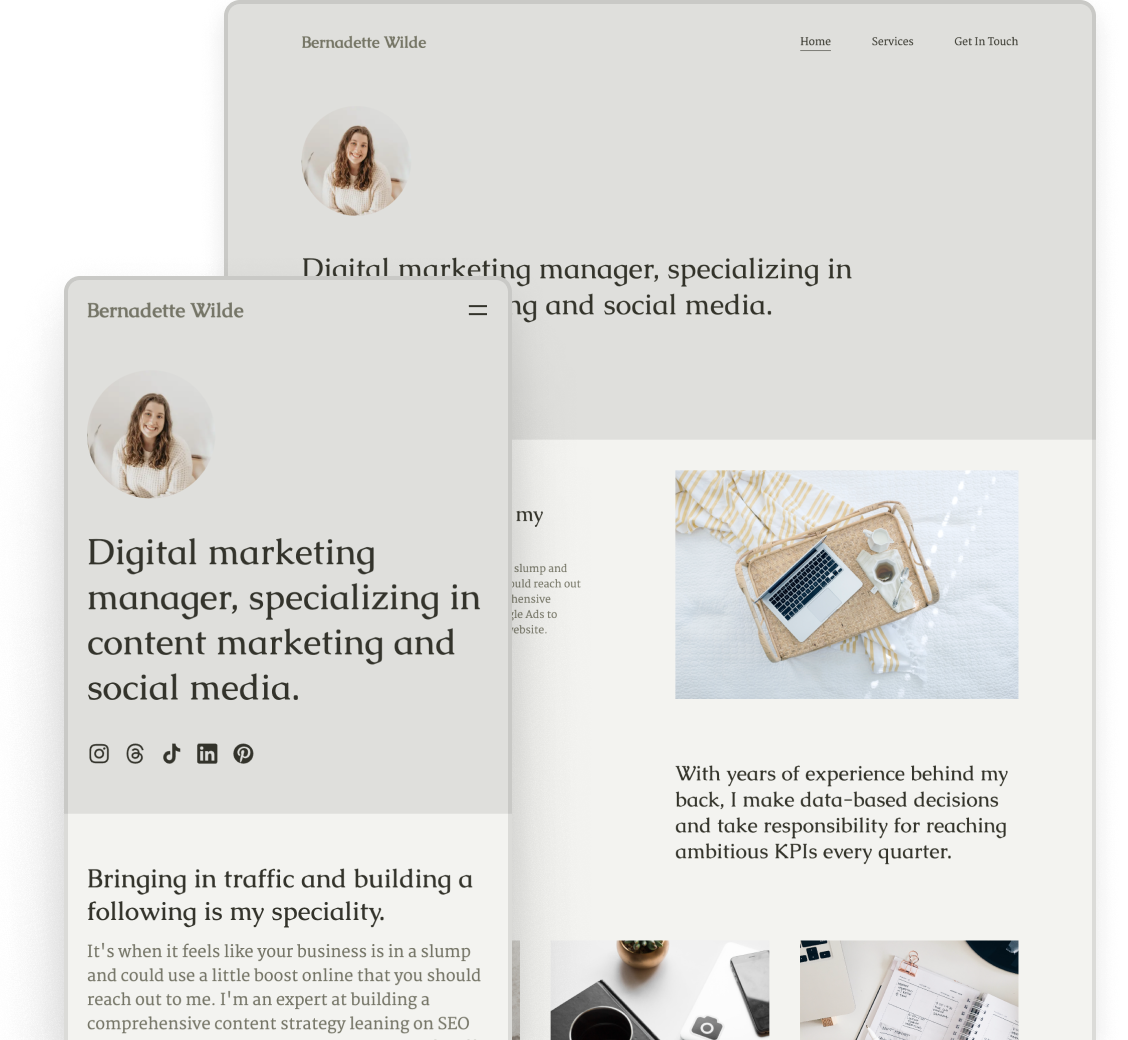
Credit: blog.copyfol.io
Setting Goals
Setting goals is crucial for your email marketing portfolio. Clear goals guide your efforts, ensuring every campaign has purpose. Without goals, your portfolio lacks direction and focus. By defining objectives, you align your strategies with desired outcomes. Goals help measure success and improve future campaigns.
Define Your Purpose
Identify what you want from your email marketing portfolio. Are you showcasing skills or attracting clients? Knowing your purpose helps tailor your portfolio. Make sure your goals reflect your ambitions.
Set Specific Objectives
Vague goals lead to unclear results. Define specific objectives for your portfolio. Do you aim to increase subscriber engagement? Or demonstrate content creation skills? Specific goals make tracking progress easier.
Ensure Goals Are Measurable
Measurable goals allow you to assess success. Use metrics like open rates or click-through rates. These numbers help evaluate the effectiveness of your campaigns. Track progress over time to see improvements.
Align Goals With Target Audience
Consider who you want to reach with your portfolio. Align your goals with your audience’s needs. Understanding their preferences guides your content strategy. Make sure your objectives resonate with their interests.
Set Realistic Timelines
Realistic timelines keep you on track. Avoid setting goals that are too ambitious. Break large objectives into smaller, manageable tasks. This approach helps maintain motivation and focus.
Review And Adjust Regularly
Regularly review your goals to ensure relevance. As your skills grow, adjust your objectives. Flexibility allows your portfolio to evolve with your career. Keep your goals fresh to maintain engagement.
Choosing A Platform
Creating an email marketing portfolio requires choosing the right platform. A well-chosen platform enhances your portfolio’s presentation and accessibility. Consider factors like ease of use, customization options, and cost.
Popular Portfolio Platforms
Several platforms cater to portfolio needs. WordPress is a versatile option. It offers various themes and plugins. Wix provides drag-and-drop features. Squarespace is known for its sleek designs. Each platform has unique benefits.
Ease Of Use
Choose a platform that suits your technical skills. Beginners might prefer Wix for its simplicity. WordPress offers more control but requires learning. Squarespace balances ease and design quality.
Customization Options
Customization allows you to showcase creativity. WordPress excels with its vast plugin library. Wix offers intuitive design flexibility. Squarespace provides stylish templates. Ensure the platform supports your vision.
Cost Considerations
Budget impacts platform choice. WordPress can be cost-effective. Wix and Squarespace have subscription plans. Evaluate features versus cost. Consider long-term affordability.
Mobile Responsiveness
Mobile responsiveness is crucial today. Ensure your portfolio looks good on all devices. WordPress and Squarespace offer responsive designs. Wix provides mobile optimization tools. Test your portfolio on various devices.
Seo Features
SEO enhances portfolio visibility. Choose platforms with strong SEO tools. WordPress is SEO-friendly with plugins like Yoast. Wix offers built-in SEO features. Squarespace provides SEO guides and settings.
Showcasing Skills
In the competitive field of email marketing, showcasing skills effectively is key. A well-crafted portfolio demonstrates what you bring to the table. Highlighting your abilities helps potential clients or employers see your value. Make sure each skill area is clear and impactful.
Design Expertise
Design is crucial in email marketing. Display your talent by showing your best email designs. Include screenshots of emails you have created. Explain the thought process behind each design. Share any tools or software you used. Make your portfolio visually appealing. This speaks volumes about your design skills.
Copywriting Prowess
Words can persuade, inform, and engage your audience. Showcase your ability to write compelling email copy. Include examples of subject lines and body text. Explain how your writing increased open rates or engagement. Highlight your unique voice and style. Good copywriting can drive results.
Analytical Skills
Numbers tell the story of your success. Demonstrate your analytical skills with data-driven results. Include metrics like open rates, click-through rates, and conversion rates. Explain how you used data to refine strategies. Show your ability to interpret data and improve campaigns. This proves you can turn insights into action.
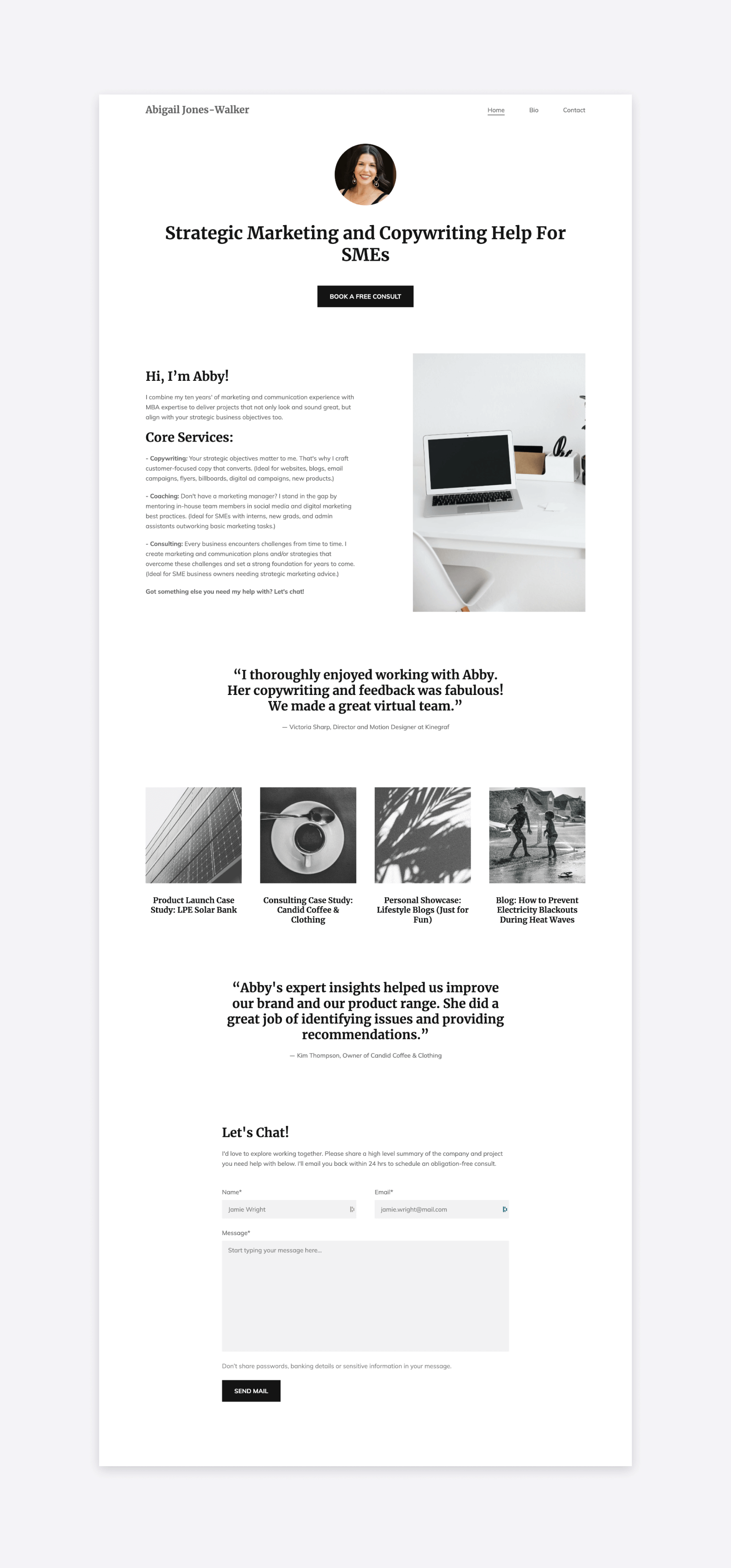
Credit: blog.copyfol.io
Creating Case Studies
Building a strong email marketing portfolio involves creating compelling case studies. Showcase your strategies and results through clear, concise examples. Highlight successful campaigns to demonstrate your expertise and attract potential clients.
Creating compelling case studies is vital for an email marketing portfolio. They tell potential clients how you solve problems and achieve goals. Each case study should highlight specific aspects of your work. Let’s explore how to structure an effective case study.Project Background
Begin by introducing the project. Explain who the client is and what they needed. Describe the initial objectives and the scope of work. This sets the stage for your narrative. It helps readers understand the context.Challenges And Solutions
Every project faces hurdles. Discuss the challenges encountered during the project. Be honest about the difficulties. Then, explain the solutions you implemented. Detail the strategies you used and why you chose them. This showcases your problem-solving skills.Results And Outcomes
Highlight the results of your efforts. Use data to support your claims. Include metrics like open rates, click-through rates, or conversions. Explain how these results benefited the client. This section proves the effectiveness of your strategies.Case studies are powerful tools in your portfolio. They demonstrate your expertise and success in email marketing.Incorporating Testimonials
Testimonials boost credibility in an email marketing portfolio. Highlight positive feedback from satisfied clients. Showcase specific examples to demonstrate effectiveness and build trust with potential customers.
Incorporating testimonials into your email marketing portfolio can be a game-changer. They provide real-world evidence of your skills and successes. Testimonials can build trust and credibility with potential clients or employers, making them a powerful tool in your marketing arsenal.Why Testimonials Matter
Testimonials offer social proof. They show others that your work has made a positive impact. This can be more convincing than a list of skills or achievements.Think about your own experiences. Have you ever been swayed by a glowing review? A testimonial can have the same impact on someone considering your email marketing services.Collecting The Right Testimonials
Reach out to past clients or colleagues. Ask them for specific feedback on your work. Make it easy for them by providing a few questions or a template.Ensure testimonials are detailed. Instead of a generic “Great job,” aim for feedback that highlights how your work helped achieve specific goals.Showcasing Testimonials Effectively
Place testimonials prominently in your portfolio. Consider starting with a powerful testimonial on your homepage.Use different formats. Written quotes, video testimonials, and even case studies can add variety and keep things interesting.Using Testimonials To Tell A Story
Think of testimonials as stories that highlight your journey. Each one should reveal something unique about your skills or approach.Use them to demonstrate how you solve problems. Did a client have a specific challenge that you helped overcome? Let their words tell that story.Ensuring Authenticity In Testimonials
Authenticity is key. Make sure testimonials are genuine and come from real experiences.Be transparent about the source. Include names, companies, or roles if possible. This adds credibility and makes the testimonials more relatable.Keeping Testimonials Updated
Regularly update your testimonials. As you complete new projects, request feedback to keep your portfolio fresh and relevant.Old testimonials can become outdated. Ensure they reflect your current skills and expertise. What’s one step you can take today to gather or update a testimonial in your portfolio?Highlighting Tools And Technologies
Showcasing tools and technologies in your email marketing portfolio is crucial. It reflects your proficiency and understanding of the industry standards. Knowing how to effectively present these tools can set you apart. Here, we explore the essential tools and technologies to include.
Understanding Email Marketing Platforms
Email marketing platforms are the backbone of any campaign. They manage subscriber lists, send emails, and track engagement. Popular platforms include Mailchimp, Constant Contact, and Sendinblue. Each offers unique features tailored to different needs.
Utilizing Design Tools
Design tools enhance the visual appeal of your emails. Canva and Adobe Spark are excellent for creating eye-catching graphics. They provide templates, making design straightforward. For advanced users, Adobe Photoshop offers more control.
Implementing Analytics Tools
Analytics tools help in measuring the success of campaigns. Google Analytics and HubSpot offer detailed insights. They track open rates, click-through rates, and conversion rates. Understanding these metrics is vital for improving future campaigns.
Exploring Automation Technologies
Automation technologies simplify repetitive tasks. Tools like ActiveCampaign and Drip automate email sequences. They ensure timely communication with your audience. Automation enhances efficiency and consistency in campaigns.
Incorporating Crm Systems
CRM systems manage customer relationships. Salesforce and Zoho CRM are popular choices. They integrate with email platforms, offering a comprehensive view of customer interactions. This integration improves personalization in campaigns.
Learning Coding Skills
Basic coding skills can enhance email customization. HTML and CSS are essential for designing emails. They allow you to tweak templates for a personalized touch. Coding knowledge can elevate your email marketing skills significantly.
Designing A Professional Layout
Creating a professional layout for an email marketing portfolio involves organizing work samples clearly. Highlight your best designs and campaigns in a visually appealing format. Ensure easy navigation and concise descriptions to showcase your skills effectively.
Designing a professional layout for your email marketing portfolio is crucial in showcasing your skills and attracting potential clients or employers. A well-structured and visually appealing portfolio can make a significant difference in how your work is perceived. Think of your portfolio as a reflection of your creativity and attention to detail. The layout should not only highlight your best projects but also make it easy for viewers to navigate. Let’s dive into some practical tips on creating a layout that stands out.###Start With A Clear Structure
A clear structure is key to keeping viewers engaged. Consider organizing your portfolio into sections like “About Me,” “Projects,” and “Testimonials.”Use headings and subheadings to guide readers through your content. This will help them easily find the information they are looking for. A table of contents can also be a useful tool for larger portfolios.###Choose A Clean And Simple Design
Simplicity is often more impactful than complexity. A clean design ensures that your work is the focal point.Avoid clutter by using ample white space and limiting color schemes to a few complementary colors. This approach allows your projects to shine without distractions.###Use High-quality Images
Images speak louder than words, especially in a visually-driven portfolio. Ensure that your images are high-quality and relevant to the projects you are showcasing.Consider including before-and-after shots or screenshots of successful email campaigns. This not only demonstrates your skills but also provides proof of your work’s impact.###Highlight Your Best Work
Your portfolio should be a curated collection of your best projects. Select works that reflect your expertise and the types of projects you want to attract.Provide brief descriptions for each project. Explain your role, the challenges faced, and the results achieved. This context can help potential clients understand your process and effectiveness.###Make It Easy To Navigate
An intuitive navigation system is crucial for a positive user experience. Use clear labels for menu items and ensure all links are functional.Consider adding a search feature or filters that allow users to sort projects by category or date. This can make it easier for viewers to find specific content quickly.###Add Personal Touches
Your portfolio should reflect your personality and style. Consider adding a personal note or a brief video introduction.Share a story about a particularly challenging project and how you overcame obstacles. This not only humanizes your portfolio but also provides insight into your problem-solving abilities.###Test Across Devices
Ensure your portfolio is responsive and looks great on all devices. With more people accessing content on mobile, this is more important than ever.Test your portfolio on different screen sizes and browsers. This ensures a seamless experience for all users, regardless of how they access your work.Creating a professional layout for your email marketing portfolio requires attention to detail and a clear understanding of your audience. What do you want them to see first? What impression do you want to leave? Answering these questions can guide your design choices and help you build a portfolio that truly stands out.Optimizing For Mobile
In today’s digital world, mobile devices dominate communication. Your email marketing portfolio must be optimized for mobile. A mobile-friendly design ensures your emails look great on any device. This increases engagement and keeps your audience interested.
Mobile optimization is essential for a successful email marketing portfolio. It helps deliver clear and effective messages. Here are key tips to make your email marketing portfolio mobile-friendly.
Use Responsive Design
Responsive design adapts to different screen sizes. It ensures your emails look good on phones and tablets. Use flexible layouts and scalable images. This guarantees a seamless user experience on mobile devices.
Keep Content Concise
Mobile users prefer quick and easy reading. Shorten your sentences and paragraphs. Focus on essential information. This keeps your audience engaged without overwhelming them.
Optimize Images
Large images slow down loading times. Compress images for faster loading. Make sure they are clear and visually appealing. This enhances the mobile experience.
Use Large Fonts
Small text is hard to read on mobile screens. Use larger fonts for better readability. Choose simple fonts that are easy on the eyes. This improves user engagement.
Test Across Devices
Test your emails on different devices before sending. Check layout and functionality. Ensure everything displays correctly. Testing helps avoid potential issues and ensures a smooth experience.
Including Contact Information
Adding your contact information is essential in an email marketing portfolio. Make it easy for potential clients to reach you by including an email address and phone number. This simple step can help build credibility and trust with your audience.
Including contact information in your email marketing portfolio is not just a formality; it’s a crucial step that can significantly impact your success. Imagine this: a potential client is impressed with your work but can’t find a way to reach out. You could lose out on an opportunity. Let’s make sure your contact details are front and center, inviting inquiries and collaborations.Contact Details: Make Them Visible
Put yourself in the shoes of someone who wants to hire you. They should be able to spot your contact information without playing hide-and-seek. Use bold text or a contrasting color to highlight your phone number, email address, and social media handles. A simple placement at the top or bottom of your portfolio ensures it’s always accessible.Provide Multiple Contact Options
Not everyone prefers the same communication method. Some people are email enthusiasts, while others lean towards direct messaging on platforms like LinkedIn. By offering various ways to contact you, you cater to different preferences and increase the chances of being contacted. Include your email, phone number, and professional social media profiles.Keep It Professional
Your contact information should reflect your professionalism. Use an email address that includes your name or business name instead of a quirky nickname. If you have a website, consider using a custom domain email address. This small detail can enhance your credibility.Update Regularly
Have you ever tried reaching out to someone with outdated contact info? Frustrating, right? Avoid this by regularly checking and updating your contact details. If you change your phone number or social media handle, update it in your portfolio immediately. This ensures potential clients can always reach you.Include A Call To Action
Simply sharing your contact information is good, but inviting people to use it is even better. Add a friendly call to action like “Let’s work together” or “Reach out for collaborations” near your contact details. This invites potential clients to take the next step, turning interest into action.Personal Experience: The Power Of Being Accessible
Once, I landed a project because my portfolio made it easy to reach me. The client appreciated the clear layout and felt confident contacting me. This taught me that being accessible can be the difference between missed opportunities and successful partnerships.Are your contact details inviting enough for potential clients to reach out? If not, it’s time for a refresh!Regular Updates
Crafting a dynamic email marketing portfolio involves regular updates to showcase your latest campaigns. Keeping your portfolio fresh highlights your evolving skills and attracts potential clients.
Creating an email marketing portfolio is a dynamic process that goes beyond just compiling your best work. One key aspect that can set your portfolio apart is regular updates. Keeping your portfolio fresh shows potential clients and employers that you are active and in tune with the latest trends in email marketing. It demonstrates your commitment to growth and adaptability, qualities that are highly valued in the fast-paced digital marketing world.Consistency Is Key
Regular updates don’t mean you have to overhaul your entire portfolio frequently. Instead, aim for consistency in adding new projects or results as they become available. This approach not only keeps your portfolio current but also shows your consistent involvement in various campaigns. Imagine a client checking your portfolio and seeing your latest success; it speaks volumes about your ongoing expertise.Showcase Recent Successes
Highlighting recent successes can significantly enhance your portfolio’s appeal. Did a recent campaign you managed result in a high open rate or an impressive ROI? Add it to your portfolio with detailed results and visuals, if possible. This not only showcases your skills but also provides concrete evidence of your capabilities, making your portfolio more compelling.Reflect Your Growth
As you gain more experience, your skills and strategies will evolve. Use your portfolio to reflect this growth by periodically updating your work samples and descriptions. When I first started, my email designs were basic, but as I learned new techniques, I made sure to replace older samples with newer, more sophisticated ones. This not only highlighted my skills but also my ability to grow and adapt.Engage Your Audience
Regular updates can keep your audience engaged and interested in your work. You might ask yourself, how often should I update my portfolio? A good rule of thumb is every quarter or after completing a significant project. This frequency ensures your content remains relevant and provides a reason for viewers to return, potentially turning one-time visitors into long-term followers or clients.Stay Ahead Of Trends
Email marketing trends shift rapidly. By regularly updating your portfolio, you can demonstrate your awareness and application of these trends. Whether it’s incorporating interactive elements or leveraging AI in your campaigns, showing that you are ahead of the curve can set you apart from others. This proactive approach signals to clients that you’re not just keeping up but leading in your field.Keep your portfolio fresh, engaging, and reflective of your current abilities and achievements. This practice not only benefits you by highlighting your latest work but also entices and reassures potential clients or employers of your dedication and expertise.
Credit: authory.com
Frequently Asked Questions
How Do I Create An Email Marketing Plan?
Identify your target audience and set clear goals. Choose the right email marketing tools. Craft engaging and personalized content. Segment your email list for targeted campaigns. Monitor performance and adjust strategies for improvement.
How Do I Create My Marketing Portfolio?
Create a marketing portfolio by showcasing your best projects. Include case studies, results, and client testimonials. Use a clear layout and highlight your unique skills. Keep it updated and tailor it to your target audience. Utilize online platforms for greater visibility.
What Is An Email Portfolio?
An email portfolio showcases your skills and achievements through email samples. It highlights your communication abilities and professional experience. This digital collection helps potential employers or clients assess your expertise effectively. Include varied examples to demonstrate versatility and creativity in your writing style.
Conclusion
Creating an email marketing portfolio boosts your professional presence. It showcases your skills clearly. Choose your best campaigns to highlight your expertise. Add metrics that prove your success. Keep the design clean and simple. Potential clients appreciate easy navigation. Update your portfolio regularly to stay current.
Make sure contact details are visible. This helps clients reach you easily. Your portfolio is your marketing tool. It builds trust and opens opportunities. Start building today and enhance your career.

